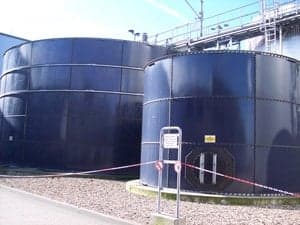The question everyone is asking around anaerobic digestion (AD) is why, with positive incentives (ROCs, FITs, RHI etc), and with the political parties seemingly aligned in their support of the technology, is the pace of development not more rapid?

The opportunity is potentially huge. If collection systems are well designed, some 6.5 million tonnes more food waste could be separately collected from households, commercial enterprises and industry, most coming from the household and commercial streams.
Separately collected household food waste collections have grown steadily over the last 6-7 years, with an annual increase of around 45,000 tpa per year such that Eunomia estimates that around 300,000 tonnes per annum (tpa) are now being collected.
From the commercial sector, the market is picking up as disposal prices rise, and support for treatment facilities increases. In 2009, there seemed to be fewer than 2,000 SMEs across the UK served with commercial food waste collections. Major waste companies such as SITA, Shanks and Biffa are now offering related services, whilst PDM and Cawleys are also stepping up involvement in the collection market. Even so, we doubt that the overall quantity of commercial food waste being separately collected is considerable at present.
Developers are, however, struggling with two key interlinked issues. One is the supply of waste into a proposed facility (on terms which will satisfy funders), the other is the availability of the funding (on terms that are reasonable in the context of the market being considered).
Banks are setting criteria whereby they will not lend for projects of a value less than 20 million, equivalent to a plant of 80-100,000 tpa capacity. Banks also want to see a considerable proportion of plant capacity guaranteed as feedstock for many years.
Guaranteeing 80% of capacity for a plant of this size would require 64,000 80,000 tonnes of capacity to be secured under either a) contracts, or b) arrangements with major waste companies with a track record in the collection market. This quantity exceeds the total annual increase (45,000 tpa) in the quantity of separately collected food waste from households across the UK.
In short, a sensible and well-designed project simply cannot make itself commercially viable because of the terms of the financing on offer.
Policy mechanisms
The approach in England the most important one in terms of the quantity of waste it affects is based upon a long-term vision of zero waste to landfill. Yet behind these words is a near complete absence of policy mechanisms which could support Defras own food waste hierarchy (even though sensibly designed systems to collect and treat smelly waste will save local authorities money at anticipated disposal costs). Outside Wales and Scotland, therefore, the steer to local authorities remains very weak, whilst the pace of take-up of food waste collections by commercial companies is heavily reliant upon drivers such as the expected increases in Landfill Tax.
In these circumstances, the dark clouds regarding funding will continue to affect those more entrepreneurial developers for whom corporate finance is simply not an option. It does raise the much wider question as to how quickly we will emerge from our economic woes if the sources of funding for those with good ideas are simply not tailored to support them. We really do need to address this failure in the capital markets. That does not detract from the fact, however, that policy could do much to diminish the risks perceived by funders in this area (and we are not referring to ever increasing levels of support though FITs, etc.).
It is not only capital markets that are failing.
For the full Eunomia report on the issue, click here.











Subscribe for free